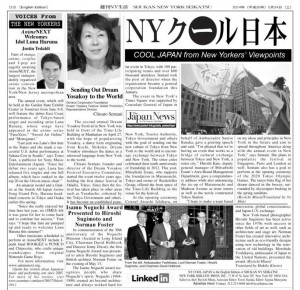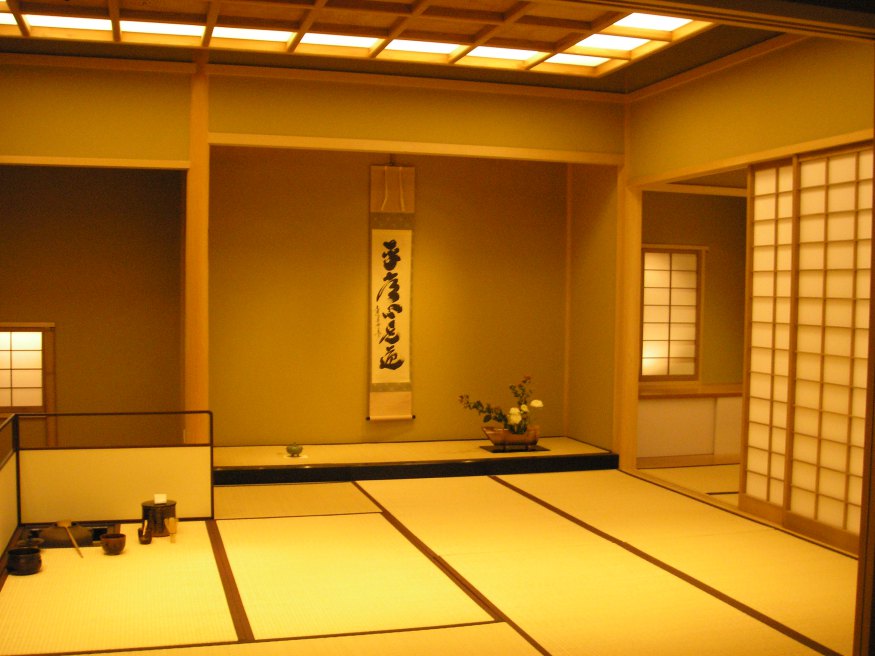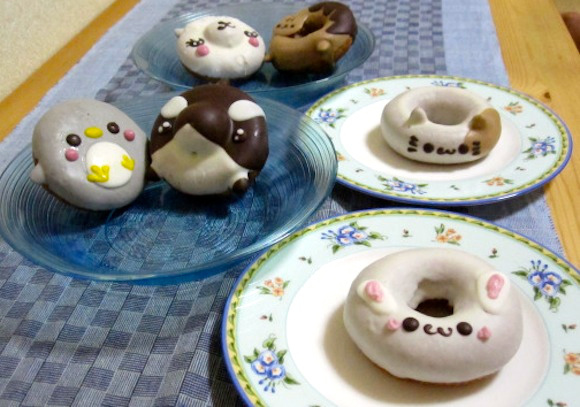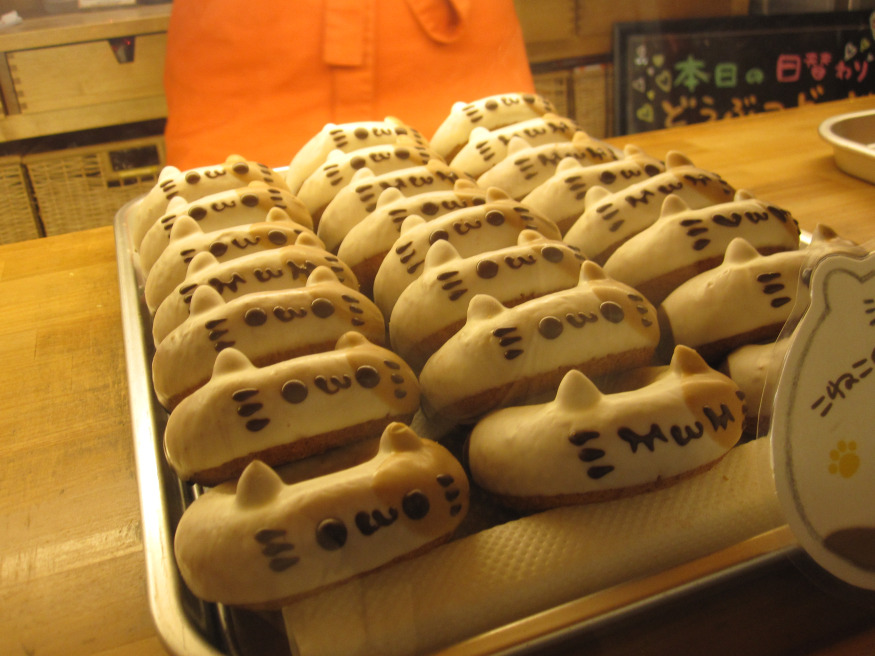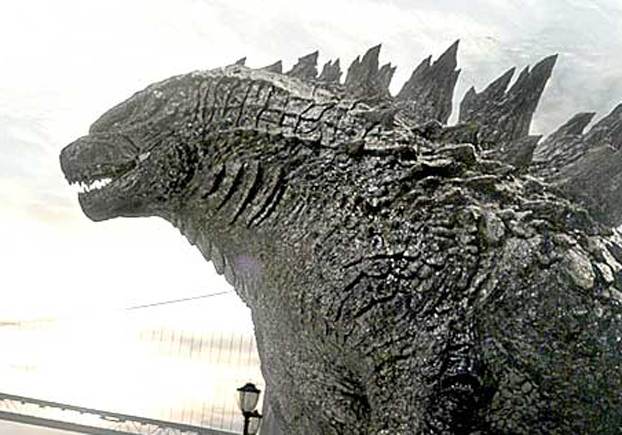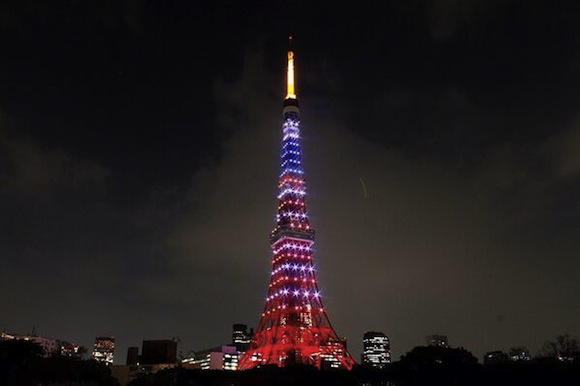【RocketNews24】Who needs pre-furnished apartments when you can get one that comes with a cat?
Posted by Michelle Lynn Dinh (Shimane-ken, Chibu-mura, 2010–13), editor and writer for RocketNews24. The following article was written by Casey Baseel, a writer and translator for RocketNews24, a Japan-based site dedicated to bringing fun and quirky news from Asia to English speaking audiences.

Some Japanese apartments are incredibly sparse. In the most extreme cases, your lease gets you four walls, a kitchen sink, bathroom, and that’s it. Oh, you want lighting fixtures, a stove, and air conditioning? Sorry, you’ll have to purchase all that on your own.
As a result, savvy apartment hunters are always on the lookout for properties that include some of these amenities. And while it’s incredibly convenient to find a place that already comes with ceiling lamps, it still can’t match the thrill some animal lovers in Japan experience when they find a new pad that comes with a cat.
Justin’s Japan: ‘Ghost in the Shell,’ Kishi Bashi, Luna Haruna at AnimeNEXT
By JQ magazine editor Justin Tedaldi (CIR Kobe-shi, 2001-02) for Examiner.com. Visit his Japanese culture page here for related stories.
After an unusually chilly spring, it’s finally starting to feel like summer. Enjoy some seasonal events this month that celebrate the best of both fine art and pop art.
This month’s highlights include:
Wednesday, May 28, 10:00 p.m.
The Bowery Electric, 327 Bowery
$5
An all-female quartet that delivers riff-heavy, post-punk anthems, Each of the Hard Nips came to live in New York at different times, from different parts of Japan. And, as conspired by the ever-dexterous hand of fate, they were to cross paths and become fast friends. They quickly formed a cult-like bond whose rituals all included drinking a lot of alcohol and uncontrollably running their mouths. The wine flowed like Kool-Aid and, somehow, they found themselves buying into the delusion that they were capable of forming a kick-ass rock band. Witness the next chapter in their story, with support from Shakes and the Johnnys.
Thursday, May 29, 7:30 p.m.
Ghost in the Shell: Arise – Borders: 1 & 2
AMC Loews Village 7, 66 Third Avenue
$10
In the first two parts of this highly anticipated prequel series of the anime sensation Ghost in the Shell, it’s the year after the fourth World War and cyborg/hacker Motoko Kusanagi finds herself wrapped up in the investigation of a devastating bombing. But she’s not the only one looking for answers—as she delves deeper into the mystery of who is behind the attack, a specialized team unlike any before begins to take shape.
June 6-8
Garden State Convention Center, 50 Atrium Drive, Somerset, NJ
$45-$60
The largest independently organized anime convention in the New York/New Jersey metropolitan area. AnimeNEXT features Japanese creators of anime and manga, voice actors, musical acts, artists, vendors and exhibits, events, panels, workshops, and gaming. This year’s musical guest is Tokyo’s Luna Haruna, who made her major debut in 2012 with the song “Soraha Takaku Kazeha Utau,” the ending theme song for the second season of anime series Fate/Zero. Her latest single, “Snowdrop,” was featured as the ending theme song the second season of Monogatari. Don’t miss her first-ever performance on the East Coast!
For the complete story, click here.
JQ Magazine: Book Review — ‘The Guest Cat’
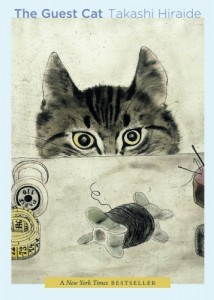
“This is one of many books that you simply cannot judge by its cover. At only 140 pages, The Guest Cat touches on a surprising range of interesting topics, and even if you’re not a cat person you can find a lot to like.” (New Directions)
By Julio Perez Jr. (Kyoto-shi, 2011-13) for JQ magazine. A bibliophile, writer, translator, and graduate from Columbia University, Julio is currently working at Ishikawa Prefecture’s New York office while seeking opportunities with publications in New York. Follow his enthusiasm for Japan, literature, and board gaming on his blog and Twitter @brittlejules.
Born in 1950, Takashi Hiraide is a talented writer across many fields including genre-bending essays and highly acclaimed poetry. His prose novel The Guest Cat (translated by Eric Selland) blends both together to produce a beautiful piece that was released in English last January. It is a winner of Japan’s Kiyama Shohei Literary Award and is a best-seller in France. This is one of many books that you simply cannot judge by its cover. At only 140 pages, it touches on a surprising range of interesting topics and even if you are not a cat person, you can find a lot to like in the book. Even the narrator admits that he does not consider himself a cat lover:
“There are a few cat lovers among my close friends, and I have to admit that there have been moments when that look of excessive sweet affection oozing from around their eyes has left me feeling absolutely disgusted. Having devoted themselves to cats body and soul, they seemed at times utterly indifferent to shame. When I think about it now, rather than my not being a cat lover, it may simply have been that I feel a disconnect with people who were cat lovers. But more than anything, I’d simply never experienced having one around.”
That is not to say that Chibi, the titular guest cat, is not lovable; on the contrary, she charms everyone she meets, but do not pass on this small gem of a book thinking it is simply a chronicle of an owner doting on his pet. It is better considered a story of how a special cat brings light and life into the minds of the humans that are blessed to have her company.
Justin’s Japan: AnimeNEXT Welcomes Idol Luna Haruna
By JQ magazine editor Justin Tedaldi (CIR Kobe-shi, 2001-02) for Shukan NY Seikatsu. Visit his Examiner.com Japanese culture page here for related stories.
Fans of manga, anime, cosplay and J-pop are eagerly awaiting AnimeNEXT, the largest independently organized anime convention in the New York/New Jersey metropolitan area.
The annual event, which will be held at the Garden State Exhibit Center in Somerset from June 6-8, will feature the debut East Coast performance of Tokyo-based singer and recording artist Luna Haruna, whose songs have appeared in the anime series “Fate/Zero,” “Sword Art Online” and “Monogatari.”
“Last year was Luna’s first time in the States and she made a successful U.S. debut performance at Sakura-Con in Seattle,” says Tomo Tran, a publicist for Sony Music Entertainment (Japan). “Since her debut two years ago, Luna has released five singles and one full album, which have ranked in the top 20 on the Oricon music chart.”
An amateur model and a finalist at the fourth All-Japan Anime Song Grand Prix, Haruna headlined concerts in Tokyo and Osaka earlier this spring.
“Since she really enjoyed her time here last year, we (SMEJ) felt it was great for her to come back and to continue her success,” Tran says. “I hope that fans are pumped up and ready to welcome Luna Haruna this summer!”
Other musicians scheduled to perform at AnimeNEXT include J-punk band ROOKiEZ is PUNK’D and Chipocrite, who crafts unique soundscapes from original Nintendo Game Boys.
For more information, visit www.animenext.org.
【RocketNews24】The demise of traditional Japanese tatami flooring?
Posted by Michelle Lynn Dinh (Shimane-ken, Chibu-mura, 2010–13), editor and writer for RocketNews24. The following article was written by Angelina Lucienne, a writer and translator for RocketNews24, a Japan-based site dedicated to bringing fun and quirky news from Asia to English speaking audiences.
If you imagine a Japanese room, chances are you think of something like the picture above: a simply furnished room with sliding shōji doors, a tokonoma with a hanging scroll, and a tatami mat floor. These are examples of the virtues of traditional Japan that many foreigners often hear extolled (along with futon, sushi and judo). When they occupy such an important part of Japanese identity, you wouldn’t think they would be in danger of disappearing anytime soon.
However, the demand for tatami mats has gone down by one third in the last 20 years and many artisans are worried the trade will soon be lost, as more and more of them find themselves rapidly aging with no successors to continue the business. Why is it that tatami floors are becoming rare now, after enduring for so long?
JQ Magazine: JQ&A with Melody Wong on the Drop That Eggroll Podcast
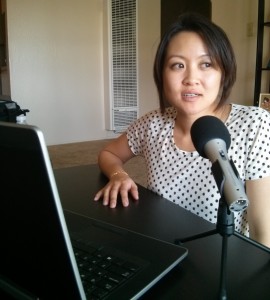
“JET gave me insight into a deeper rooted area of the Japanese culture that I appreciate. There were so many similarities of Japanese culture that I saw in my Chinese culture, and it really made me appreciate both as separate entities.” (Courtesy of Melody Wong)
By Wendy Ikemoto (Ehime-ken, 2006-2011) for JQ magazine. Wendy is a Hawaii-transplant and current Secretary of the JET Alumni Association of New York (JETAANY). When she isn’t working with librarians, you’ll find her visiting JET friends around the globe.
Melody Wong (Okayama-ken, 2011-13) is a native of Los Angeles and a member of the JET Alumni Association of Southern California (JETAASC). Prior to JET, she attended the University of California at Riverside and worked in finance for half a decade before deciding to switch things up to teach English in Japan. In December 2013, she launched the Drop That Eggroll podcast with her co-host and good friend, Alex Lau. Together, they explore subjects that span across Asian ethnicities, ranging from fun topics like pretty Korean boys and Filipino cuisine to more controversial fare like the Tiger Mother’s tips for success and ANA’s “whiteface” commercial.
Six months after DTE’s launch, JQ caught up with Melody to get the scoop on how the podcast came to be, what the future holds for it, how JET has influenced her views on the Asian culture, and why you all should be tuning in.
Can you start by describing your background for us?
I’m a second-generation Chinese American, born and raised in Los Angeles. I speak Cantonese and English fluently. The only Asian country I’ve ever lived in was Japan (two years), though I’ve traveled back and forth between China and the U.S. throughout my childhood.
Where were you on JET?
I was a JET in a tiny little town called Kibichuo-cho in the Okayama Prefecture. My town was so small and rural that even people in Okayama barely knew about it. There was no train station, so no one could really get to me unless they had a car, so I drove out everywhere all the time. I was an assistant language teacher (ALT) to multiple elementary and junior high schools.
How do you and Alex know each other?
Alex and I met through our mutual friend Larry. In high school, I was an avid member of the community service club, Key Club. My high school was part of a larger division that included lots of other local high schools, which is how I met Larry. Larry attended the Art Center College of Design and became friends with his classmate Alex. Through some social engagements, Alex and I met. All three of us, including several other friends, went on a trip to Japan in 2010, which was the trip that ultimately influenced me to join the JET Program.
【RocketNews24】Kawasaki donut shop goes beyond cat sweets with cute alpacas, penguins, and killer whales
Posted by Michelle Lynn Dinh (Shimane-ken, Chibu-mura, 2010–13), editor and writer for RocketNews24. The following article was written by Casey Baseel, a writer and translator for RocketNews24, a Japan-based site dedicated to bringing fun and quirky news from Asia to English speaking audiences.
If we’re speaking honestly, we don’t really need much of an added incentive to eat a donut. Really, a sweet, inexpensive indulgence that we can eat with our hands is pretty much a laser-guided strike on our willpower.
Still, we can usually muster enough self-control that we don’t plow through a half-dozen in one sitting. But when you take donuts’ numerous preexisting merits and add the visual appeal of shaping them like cats, penguins, alpacas, and even killer whales, that’s when we stop even trying to resist them.
Click here for more on these adorable donuts and to find out where you can get some.
JET alum Roland Kelts on Japan’s “Generation Resignation” in Adbusters
*****************
Another thought provoking article by JET alum author and writer Roland Kelts(Osaka-shi, 1998-99), this one in the current issue of Adbusters.
The Satori Generation
A new breed of young people have outdone the tricksters of advertising.
Roland Kelts, 07 May 2014
They don’t want cars or brand name handbags or luxury boots. To many of them, travel beyond the known and local is expensive and potentially dangerous. They work part-time jobs—because that is what they’ve been offered—and live at home long after they graduate. They’re not getting married or having kids. They’re not even sure if they want to be in romantic relationships. Why? Too much hassle. Oh, and too expensive.
In Japan, they’ve come to be known as satori sedai—the “enlightened generation.” In Buddhist terms: free from material desires, focused on self-awareness, finding essential truths. But another translation is grimmer: “generation resignation,” or those without ideals, ambition or hope.
CLICK HERE to read the rest on ADBUSTERS: https://www.adbusters.org/magazine/113/satori-generation.html
Click here to read more of Roland’s articles from Adbusters: https://www.adbusters.org/authors/roland_kelts
【RocketNews24】Sharp’s Ocha-presso brings traditional Japanese flavor to your kitchen
Posted by Michelle Lynn Dinh (Shimane-ken, Chibu-mura, 2010–13), editor and writer for RocketNews24. The following article was written by Angelina Lucienne, a writer and translator for RocketNews24, a Japan-based site dedicated to bringing fun and quirky news from Asia to English speaking audiences.
Coffee and espresso drinks are quite common in Japan, but green tea will always have a special place in Japanese hearts, as evidenced by the availability of green tea flavored doughnuts, ice bars, beer and even curry. Now, Sharp has announced a new machine for home use that makes perfect matcha (green tea made from powdered tea leaves). They are calling it the Healsio Ocha-presso (or Healthy-o Tea-presso, if you prefer).
The Ocha-presso mills whole tea leaves, boils water and blends it together all in one machine. It was modeled on home espresso machines, but designed to reflect the essential parts of the tea ceremony (represented in the graphic below).
Continue reading here.
More from RocketNews24
- Tohoku man honors brother killed in tsunami with hundreds of blue carp streamers
- YouTuber combines original and latest Godzilla in cool mashup trailer
- Real, functional Attack on Titan swords: This man’s year-long project will blow your mind
JQ Magazine: Concert Review—Yoshiki Classical World Tour Dazzles San Francisco with Surprise X Japan Guest

“The night offered something for everyone in Yoshiki’s ability to merge and bring together different genres and listeners and touch the collective beating heart therein.” (Shirong Gao)
By Shirong Gao (Shiga-ken, 2005-07) for JQ magazine. A member of JETAA Northern California, Shirong is a graphic designer, Illustrator, and breakfast food lover who worked in a Japanese countryside as seen only in Studio Ghibli movies. For more, visit gaoshirong.com.
Every night, as a child drifting off to sleep, I looped a rock ballad. My personal lullaby. A song by multi-million-selling heavy metal band X Japan, the Rising Sun’s answer to KISS. Yet not even in dreams did I see myself growing up to one day meet its leader, Yoshiki, and witness how far he’s come in his career.
A classically trained musician turned rock legend, Yoshiki has now returned to his more refined roots, embarking on a world tour of Yoshiki Classical concerts featuring music from the eponymous solo album released last year in collaboration with talents the likes of Beatles producer Sir George Martin and the London Philharmonic Orchestra.
On April 28, Davies Hall, home to the San Francisco Symphony, was packed on a Monday night to host only the second date of Yoshiki’s tour following its debut in Costa Mesa three days prior. “Definitely a different scene from a typical classical concert,” commented attendee Arisa Takahashi (Nara-ken CIR, 1991-92), who has also performed at the hall as part of the Sing Out, Davies! choral workshop. “There were people with blue hair, dressed in their frilly Lolita finery, sitting alongside classical music attendees.”
【RocketNews24】Japanese fans: New American Godzilla is “too fat”
Posted by Michelle Lynn Dinh (Shimane-ken, Chibu-mura, 2010–13), editor and writer for RocketNews24. The following article was written by Jessica, a writer and translator for RocketNews24, a Japan-based site dedicated to bringing fun and quirky news from Asia to English speaking audiences.
Fans of monster movies or big Hollywood blockbusters are no doubt aware that a reboot of the famous Godzilla franchise is due to hit theaters next month. As you might imagine for a movie featuring one of their most beloved pop culture icons, the Japanese are deeply interested in how America is going to bring their national kaiju to the screen.
When clear pictures of the creature hit the net this week, the response was probably not what studio execs were hoping for. Some Japanese fans are apparently calling this incarnation of Godzilla “fat”. Ouch.
The pictures, released by Warner Legendary through the Los Angeles Times, were immediately picked up by fan sites here in Japan. While some commenters said this Godzilla looked stronger than his ancestor, others were not as impressed.
“He’s so fat, I laughed.”
“Where’s his neck?”
“He’s gone and supersized himself!”
“I’m not surprised. A spare tire is expected in middle age.”
“Gee, even Godzilla has metabolic syndrome these days…”
Sure, this Godzilla is much larger than his predecessors, but I’m not sure calling him fat is a good idea. Even gigantic lizard monsters have feelings, you guys. And do you really want to make a 100-meter-tall reptilian sea beast more angry?
Source and images: Itai News
More from RocketNews24
- Shark shocks Ibaraki aquarium staff by swallowing…another shark
- Apparently cats enjoy cherry blossoms as much as we do【Photos】
- Japanese online retailers looking for a change in the sales tax system before they “raise the white flag”
【RocketNews24】Tokyo Tower lights up beautifully in Star-Spangled Banner style for President Obama
Posted by Michelle Lynn Dinh (Shimane-ken, Chibu-mura, 2010–13), editor and writer for RocketNews24. The following article was written by Kay, a writer and translator for RocketNews24, a Japan-based site dedicated to bringing fun and quirky news from Asia to English speaking audiences.
Yes, President Obama has arrived in Japan (and apparently already enjoyed the legendary sushi at Sukiyabashi Jiro), and with all the buzz and tightened security accompanying his visit, it’s hard not to get a little excited. Well, it seems even one of the landmark symbols of Tokyo, the Tokyo Tower, is getting all dressed up to welcome Mr. Obama. For two nights only, the 333m (1093ft) tall tower will be illuminated in the red, white and blue colors of the American flag!
That’s right, in honor of the President’s visit, for the nights of April 22 and 23, Tokyo Tower will be lit up in bright Star-Spangled Banner colors from sundown (around 6:20pm) to midnight. Naturally, we wanted to get a look at the special red white and blue version of the tower, and take some pictures to share with you as well. We hurried off to the Tokyo City View Sky Deck in Roppongi, where we were able to take the pictures below:
Click here to see RocketNews24’s images of the Star-Spangled Tokyo Tower.
JQ Magazine: Book Review — ‘Apparitions: Ghosts of Old Edo’
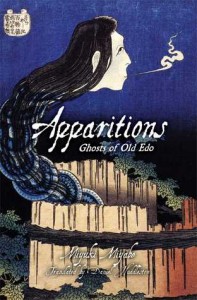
“Apparitions succeeds at not only giving historically accurate insight into the Edo period, but also delivers thought-provoking ghost stories that inspire fear and excitement with subtlety and expertly written dialogue and prose.” (Haikasoru)
By Julio Perez Jr. (Kyoto-shi, 2011-13) for JQ magazine. A bibliophile, writer, translator, and graduate from Columbia University, Julio is currently working at Ishikawa Prefecture’s New York office while seeking opportunities with publications in New York. Follow his enthusiasm for Japan, literature, and board gaming on his blog and Twitter @brittlejules.
Miyuki Miyabe is a Japanese author who writes widely popular fantasy, science fiction, and crime fiction for adults and young adults. Some of her works translated into English are Brave Story, ICO: Castle in the Mist, and The Book of Heroes. Published by Haikasoru last November, Apparitions: Ghosts of Old Edo is a collection of Miyabe’s short stories (translated by Daniel Huddleston) about pre-modern Japan depictions of ghosts, oni, and other supernatural events.
Apparitions includes nine short stories that are each unique but all so thoroughly engrossing that you can feel the immediacy of the narrator leaning in to deliver the chilling line foretelling the horrors yet to be revealed. Each of the stories captures the social hierarchy of the Edo period, which is a key element to illustrate in Japanese horror. One of the reoccurring aspects in Japanese ghost lore is an unbearably deep grudge that keeps a person’s spirit lingering after death. Edo society had a very rigid class system that is the source of frustration and resentment among characters, and this very resentment leads to vengeful ghost stories. This is why most ghosts in this genre are servants or women who are taking revenge on unjust masters, and insincere lovers of higher status. In this way, Japanese ghost stories are uniquely powerful in portraying the potential for wickedness in the human heart, whether it is the heart of the living or that of the vengeful dead. The supernatural dangers that appear in these stories all result from the cruel actions and thoughts of normal people that can and do occur every day. This is often exactly what is terrifying about these tales—not the ghosts, but the people.
【RocketNews24】Six (and a half) essential resources for learning Japanese
Posted by Michelle Lynn Dinh (Shimane-ken, Chibu-mura, 2010–13), editor and writer for RocketNews24. The following article was written by Philip Kendall (Fukushima-ken, Shirakawa-shi, 2006–11), senior editor and writer for RocketNews24, a Japan-based site dedicated to bringing fun and quirky news from Asia to English speaking audiences.

As we’ve said before, Japanese isn’t actually as hard to learn as it’s often made out to be. Unlike English, for example, Japanese follows its own grammatical rules far more rigidly, pronunciation is easy because there is only one variant of each vowel sound to choose from (none of this tomayto/tomahto business), and it’s possible to create entire, perfectly meaningful and valid sentences without uttering a single pronoun or bothering to conjugate a verb.
Nevertheless, the language will not magically seep into you through a desire to speak it alone — you still need to encounter and study it as often as possible. With that in mind, we’d like to present to you the six and a half resources that no dedicated student of the Japanese language should ever be without. Oh, and the good news is some of them are completely free.
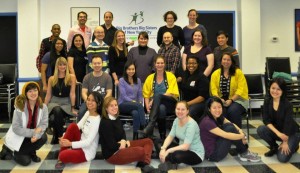
Members of the JET Alumni Association of New York volunteering in the annual Japan-a-Mania community event with Big Brothers Big Sisters of New York City, January 2014. (Courtesy of Monica Yuki)
By Eden Law (Fukushima-ken, 2010-11) for JQ magazine. Eden is JETAA New South Wales‘s webmaster, meaning he is the voice on all the online and social media for the Sydney-based chapter like Twitter, Instagram (both @jetaansw) and Facebook. Outside of JETAA, he doesn’t exist, and is merely a concept of a shadow of a dream of an enigma, wrapped in mystery and served with a side of salad.
Introduction
The following is a shamelessly biased opinion: Being a member of JETAA is fantastic. One gets to help organise and be involved in events and projects that reach the general public here in Sydney (like the Japan Festival), hang out with a great group of like-minded people that know all the best Japanese places to eat, drink and be merry, and who are rarely inhibited in any karaoke session. There is ample opportunity to new people constantly, both inside and outside that chapter’s home city’s J-community, so in a way, the JET experience never truly ends.
That’s a personal assessment of what it’s like being a member of JETAA, the alumni association for former JETs. JETAA chapters exist all over the world from where the JET Programme has drawn its recruits. They give former JETs a way to connect with their local J-community and like-minded peers, and are essentially a non-profit social organisation with a Japanese cultural bent. And because JET is made up of a diverse group of people from all walks of life, JETAA chapters have great potential as a resource with links in government, business, education, academia and social networks.
But it can’t be denied that many chapters struggle with visibility or relevancy, in attracting members to events or to join their committees. The last point is especially important, as new members help to keep the organisation dynamic and active. And while the reasons for this are different for every situation, some similar and salient points can be discerned, notably from online forum comments (like LinkedIn). While a comprehensive discussion can probably fill a volume or ten, this article will nevertheless discuss these points.
So what does JETAA have to deal with?


